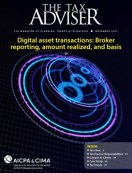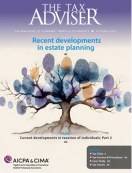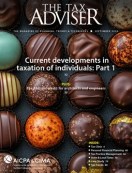- news
- PRACTICE & PROCEDURES
About 1 million taxpayers to get automatic penalty relief next year
Related
Corporate Transparency Act, source of BOI reporting mandate, held constitutional
Even an expert says: Digital asset reporting creates headaches
IRS clarifies health savings account changes in H.R. 1 in new notice
The IRS will provide penalty relief to about 1 million taxpayers automatically starting next year, the national taxpayer advocate (NTA) said during a session at the AICPA National Tax Conference.
The IRS will offer first-time abatements (FTAs) to taxpayers who file their return late, provided they meet certain criteria, said NTA Erin Collins, who heads the Taxpayer Advocate Service (TAS). Those criteria include having no unreversed penalties in the preceding three tax years, except estimated tax penalties.
Previously, the information about FTAs was only in the Internal Revenue Manual (IRM), which contains internal guidelines for IRS personnel to follow. They’re neither statutory nor regulatory, so a taxpayer, CPA, or attorney calling the IRS on behalf of a client had to know they’re in the IRM.
Collins estimated that about 1 million taxpayers, most of whom are lower-income, qualify for the FTA annually, but don’t know that they must ask for it. That will change as of April 15, 2026, the deadline for filing 2025 returns.
“So, if someone files late after April 15, they will get a lovely letter from the IRS,” Collins said. “I haven’t seen it yet, but I suspect it’ll say something like, ‘Dear Erin Collins, thank you for filing your tax return, albeit late. Please don’t do it again, and we are nice enough to waive the penalty.’ I assume they’re going to be notifying the taxpayers and explaining things to them as to what the law is and what the rules are, to educate them so that they don’t have a challenge again.”
The IRS agreed several years ago to make FTAs automatic but had to determine a way to track taxpayers’ history through its system, she said.
“What they had to do was put markers on the previous accounts so that when we get to Year 3, they could know that they qualify, and it wouldn’t take a human to have to go back and look at the previous years,” Collins said.
Online upgrades
TAS is in the process of making several online upgrades, including a public-facing option similar to the IRS’s “Where’s My Refund” portal, in which taxpayers and tax practitioners can follow the status of an open case with TAS, Collins said.
The office is testing the portal with members of Congress because, when a constituent takes a tax issue to a congressional member, that member takes the case to TAS, Collins said. And Congress wants a more efficient way to work with TAS case advocates, she said.
Collins said she hopes the portal is available to the public by the end of 2026. It should be a “huge advantage” for taxpayers, tax practitioners, and TAS case advocates, who, at one time, managed over 200 cases at one time, she said.
“I think it’s going to be a win-win for everybody,” she said.
In recent months, TAS also replaced its previous case management system, which was more than 20 years old, with a new system called Phoenix, Collins said.
— To comment on this article or to suggest an idea for another article, contact Martha Waggoner at














